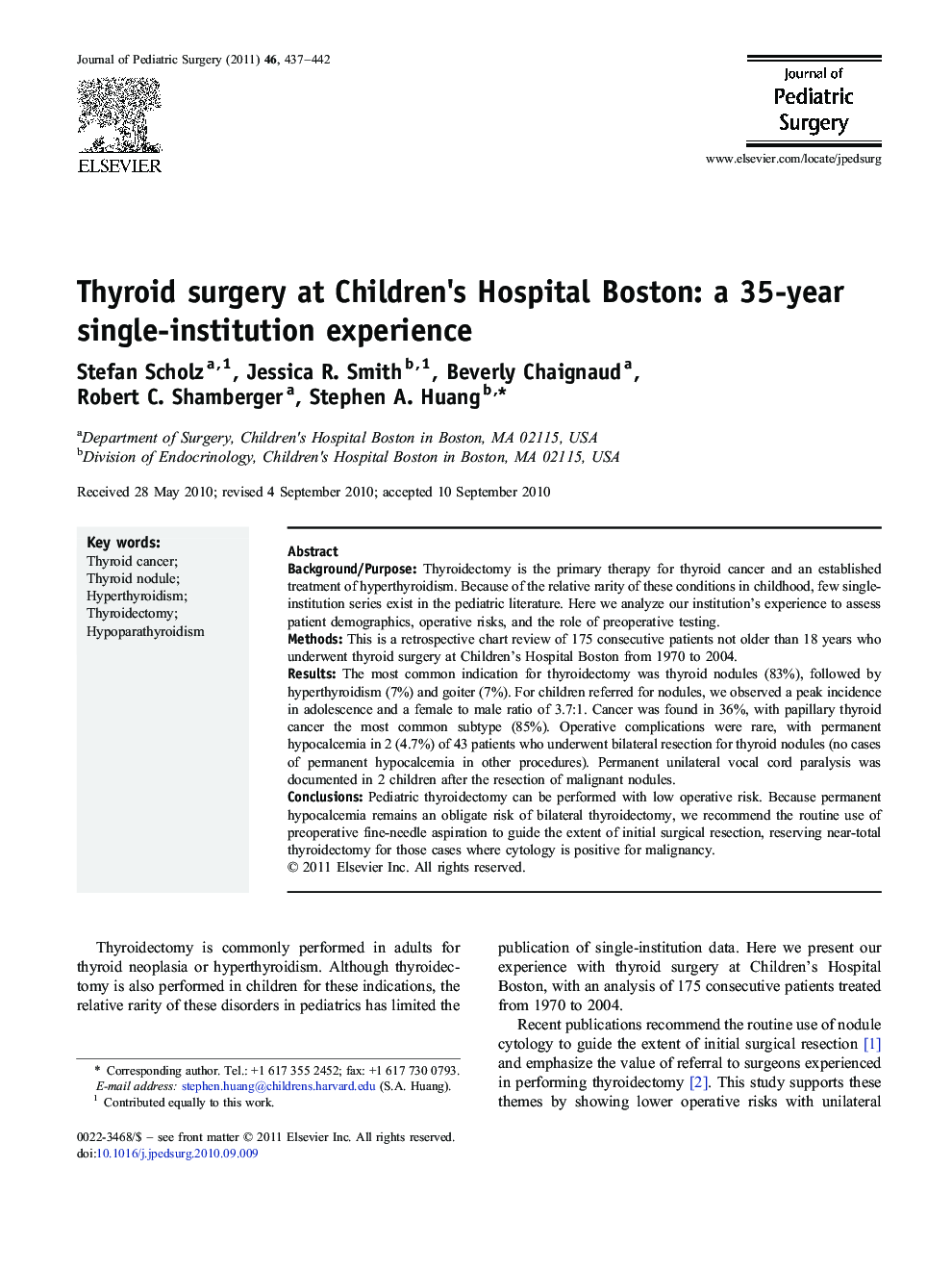| Article ID | Journal | Published Year | Pages | File Type |
|---|---|---|---|---|
| 6218036 | Journal of Pediatric Surgery | 2011 | 6 Pages |
Background/PurposeThyroidectomy is the primary therapy for thyroid cancer and an established treatment of hyperthyroidism. Because of the relative rarity of these conditions in childhood, few single-institution series exist in the pediatric literature. Here we analyze our institution's experience to assess patient demographics, operative risks, and the role of preoperative testing.MethodsThis is a retrospective chart review of 175 consecutive patients not older than 18 years who underwent thyroid surgery at Children's Hospital Boston from 1970 to 2004.ResultsThe most common indication for thyroidectomy was thyroid nodules (83%), followed by hyperthyroidism (7%) and goiter (7%). For children referred for nodules, we observed a peak incidence in adolescence and a female to male ratio of 3.7:1. Cancer was found in 36%, with papillary thyroid cancer the most common subtype (85%). Operative complications were rare, with permanent hypocalcemia in 2 (4.7%) of 43 patients who underwent bilateral resection for thyroid nodules (no cases of permanent hypocalcemia in other procedures). Permanent unilateral vocal cord paralysis was documented in 2 children after the resection of malignant nodules.ConclusionsPediatric thyroidectomy can be performed with low operative risk. Because permanent hypocalcemia remains an obligate risk of bilateral thyroidectomy, we recommend the routine use of preoperative fine-needle aspiration to guide the extent of initial surgical resection, reserving near-total thyroidectomy for those cases where cytology is positive for malignancy.
